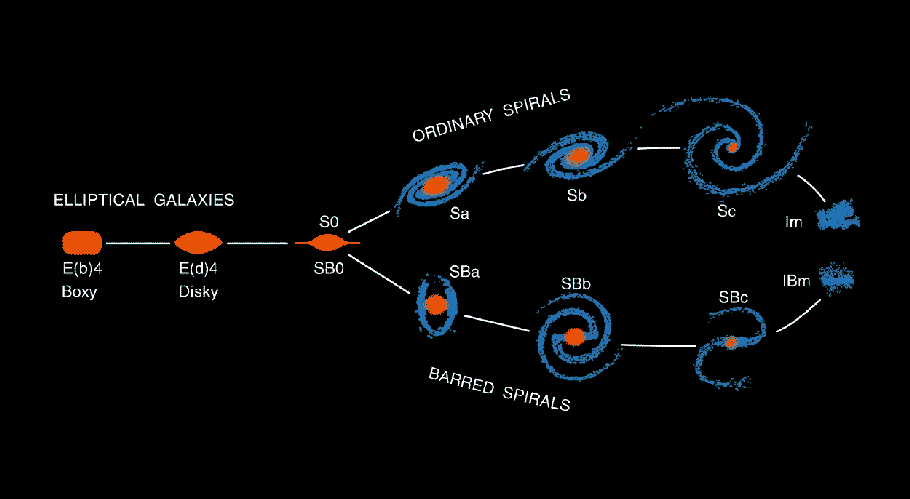
ABSTRACT The Hubble classification scheme has a well known drawback for elliptical galaxies: the sequence E0 - E6 correlates primarily with inclination and not with fundamental properties. In contrast, later-type galaxies are ordered by fundamental physical parameters. In Kormendy and Bender (1996) ApJL, 464, L119, we propose to revise the Hubble sequence so that it orders ellipticals by isophote shape. Specifically, we suggest that the Im - spiral - S0 sequence be connected to disky ellipticals and thence to boxy ellipticals. The sequence is continuous from S0s to disky Es. However, boxy Es may be unrelated to other ellipticals: global and core properties both show signs of a dichotomy between (1) normal- and low-luminosity ellipticals that rotate rapidly, that are nearly isotropic and oblate-spheroidal, that are coreless, and that have disky-distorted isophotes, and (2) giant ellipticals that are essentially nonrotating, that are anisotropic and moderately triaxial, that have cuspy cores, and that are boxy-distorted. In the classification, we use isophote shape as an implicit indicator of velocity anisotropy. Two observations support this interpretation: (1) ellipticals with disky isophote distortions rotate rapidly while boxy ellipticals tend to rotate slowly; (2) disky ellipticals show little minor-axis rotation while boxy ellipticals often have large amounts of minor-axis rotation. An approximate classification by velocity anisotropy extends the Im - spiral - S0 sequence through the ellipticals in a physically reasonable way, and it is diagnostic of formation mechanisms. Care is required to recognize unfundamental complications such as the building by accretion of disky substructure inside a boxy elliptical. However, we believe that the proposed scheme distills the essential physics that should be embodied in a relevant morphological classification.
University of Texas Astronomy Home Page
John Kormendy (kormendy@astro.as.utexas.edu)